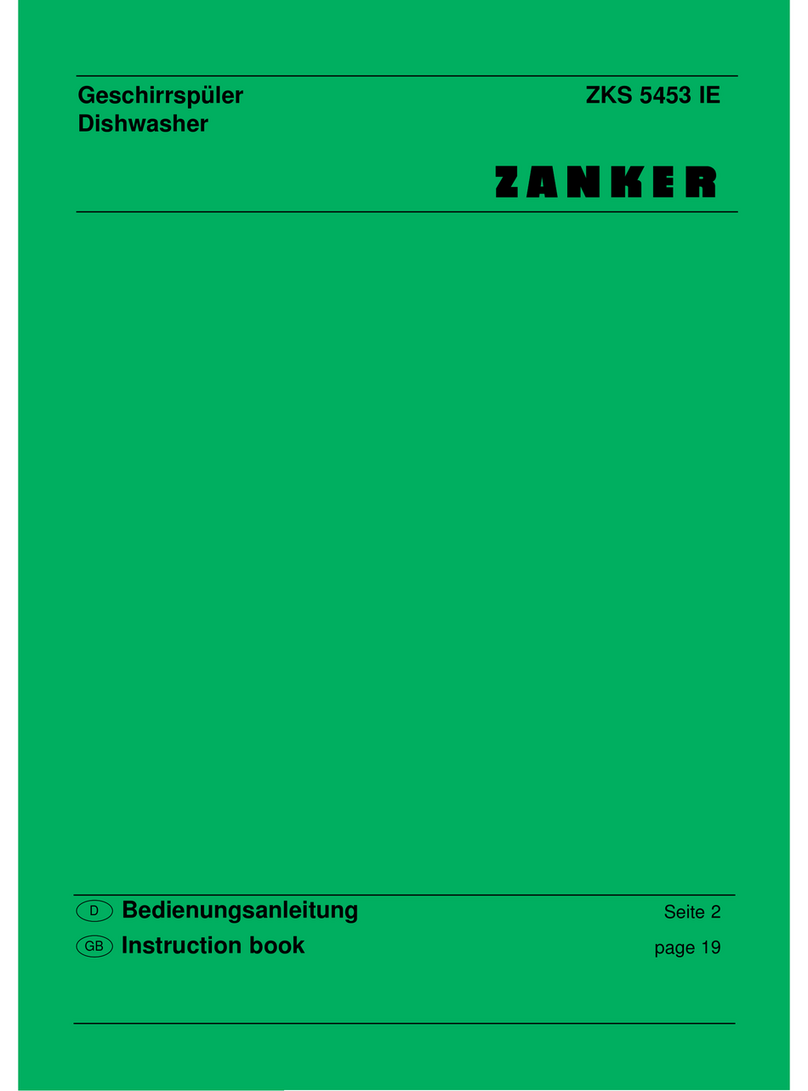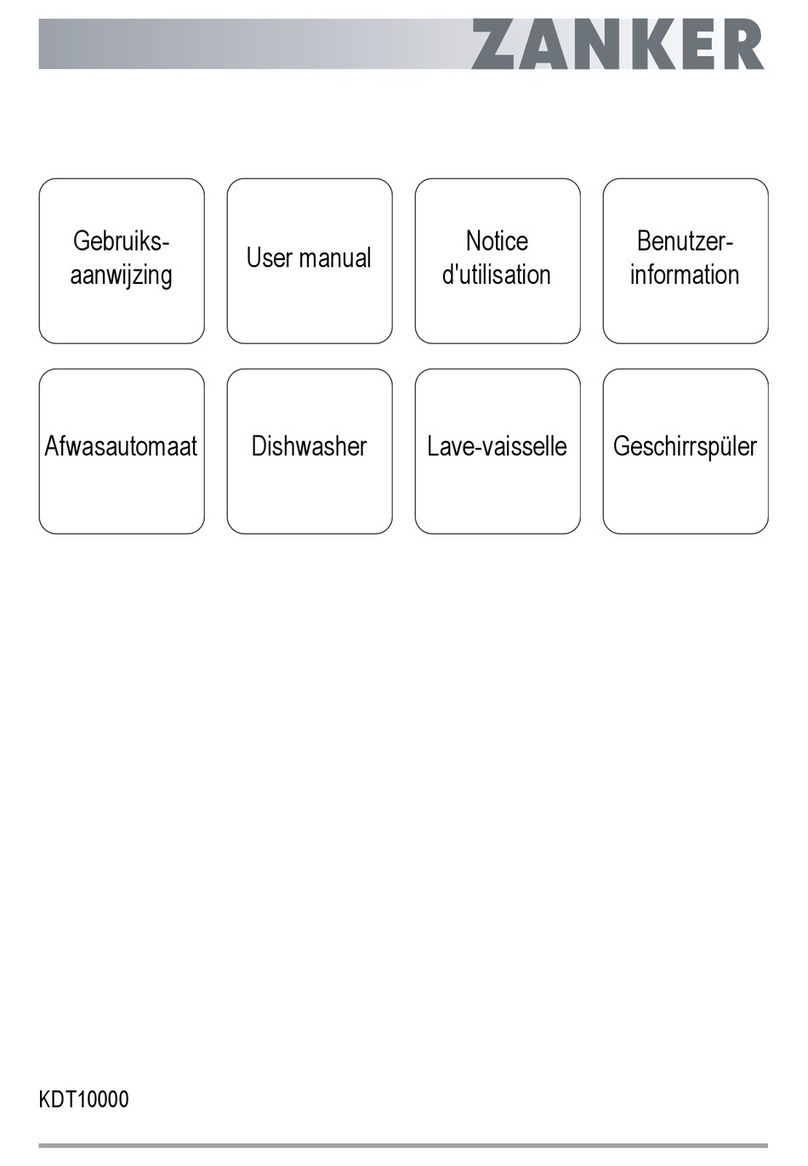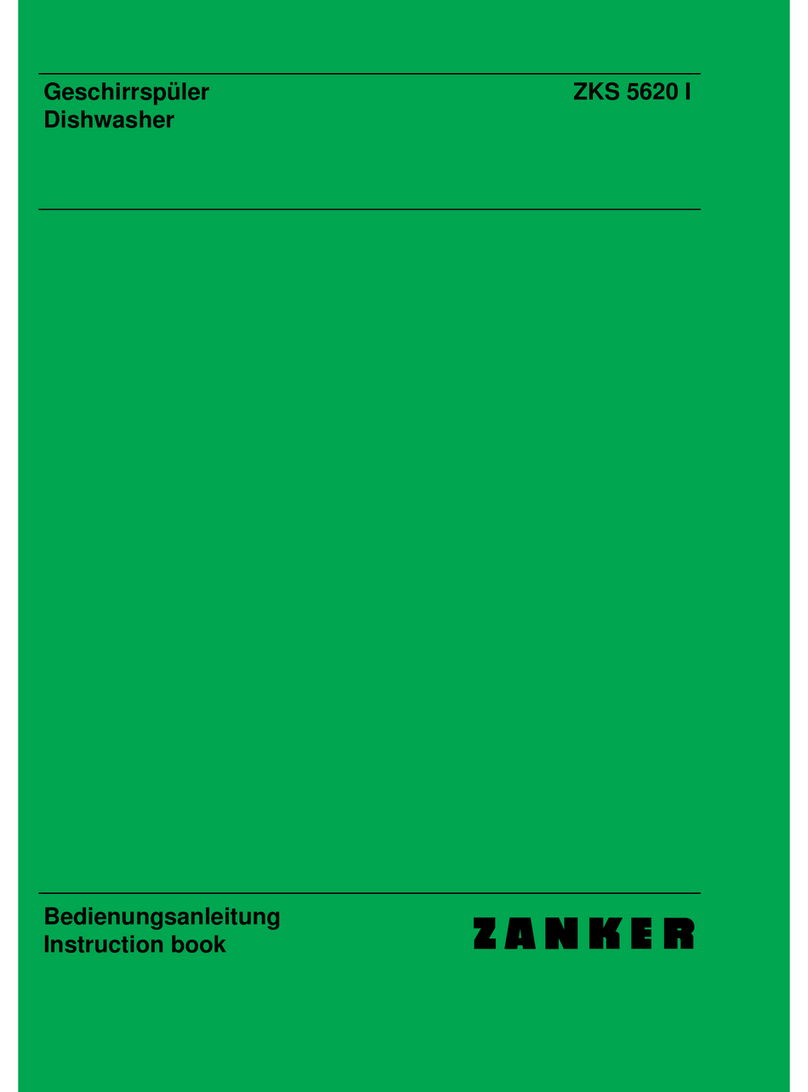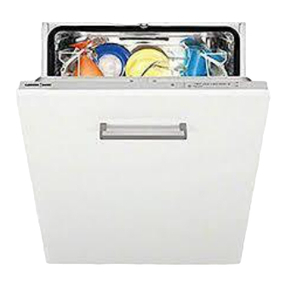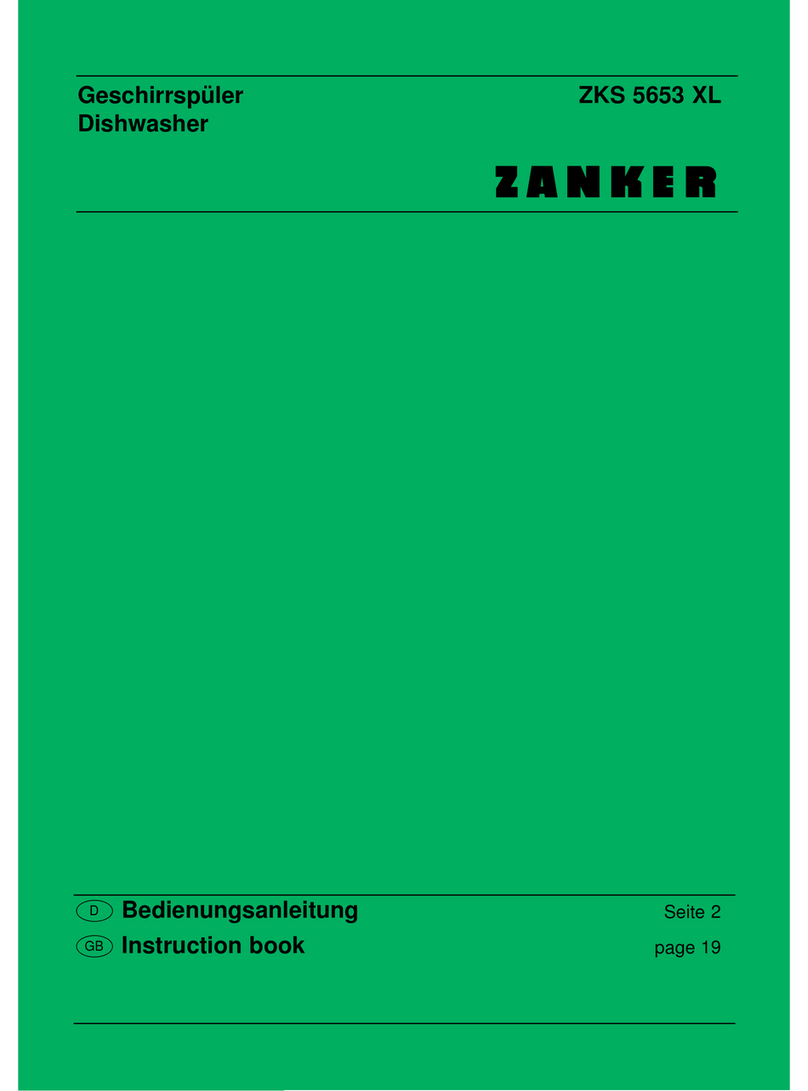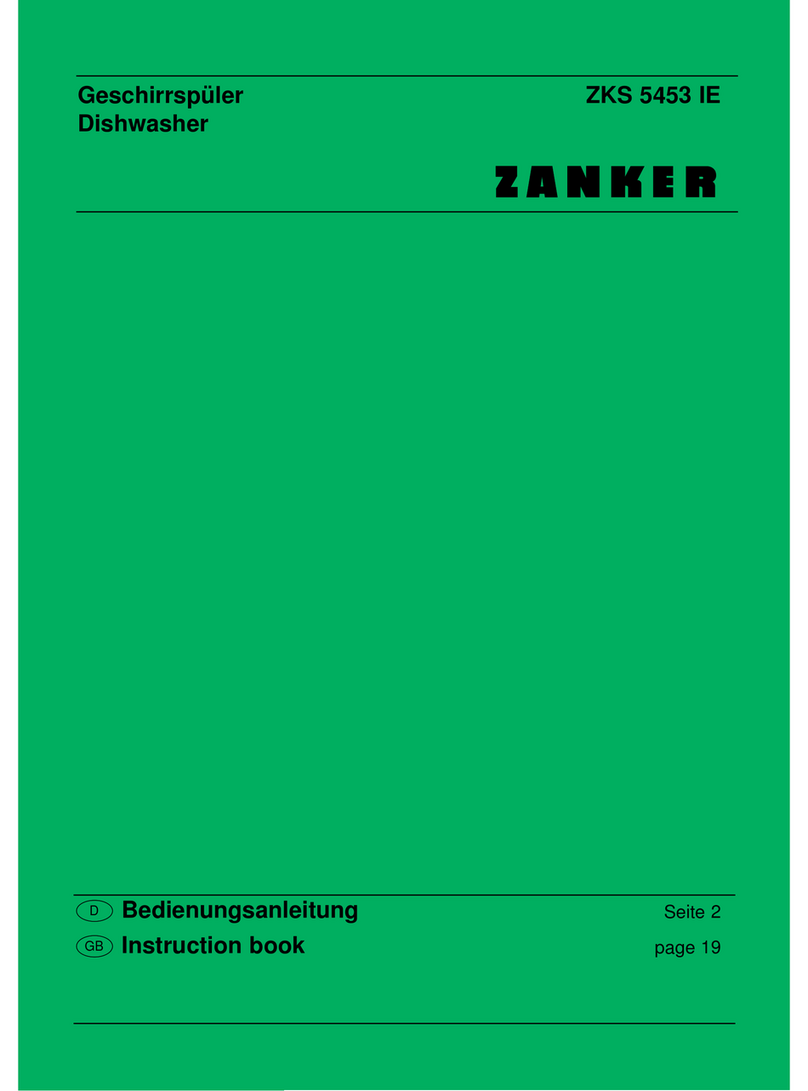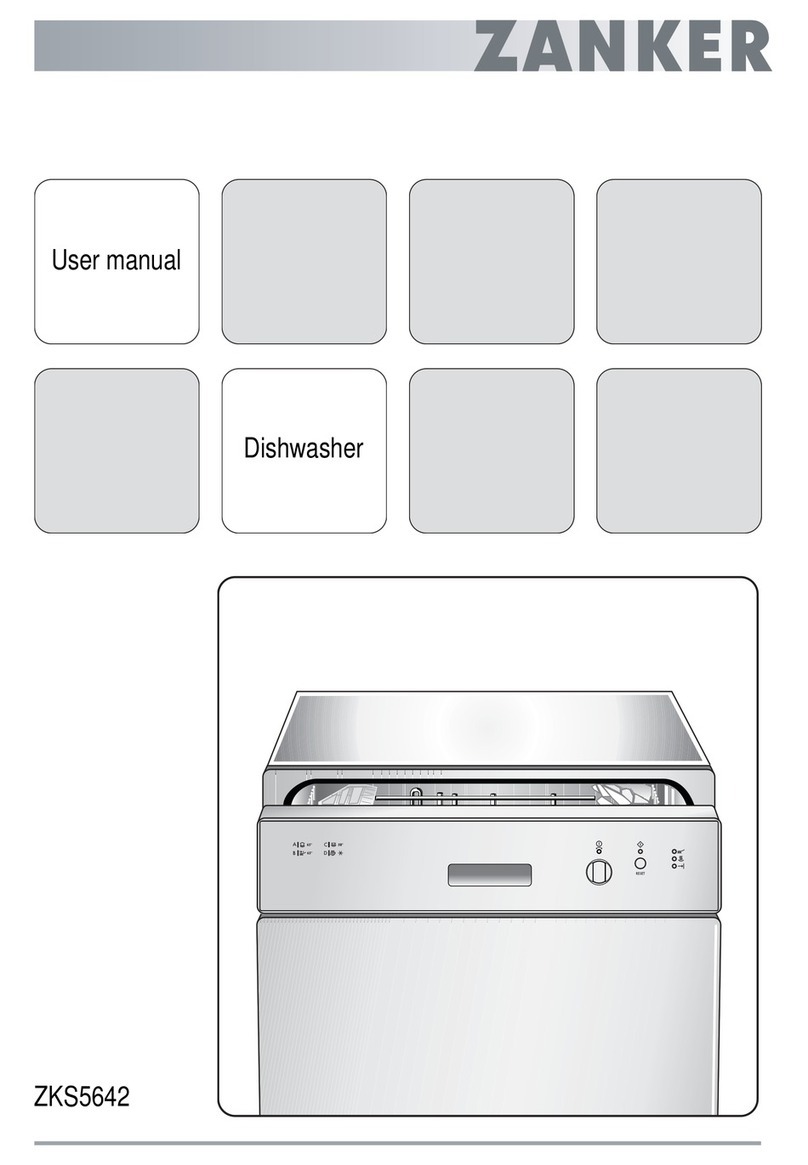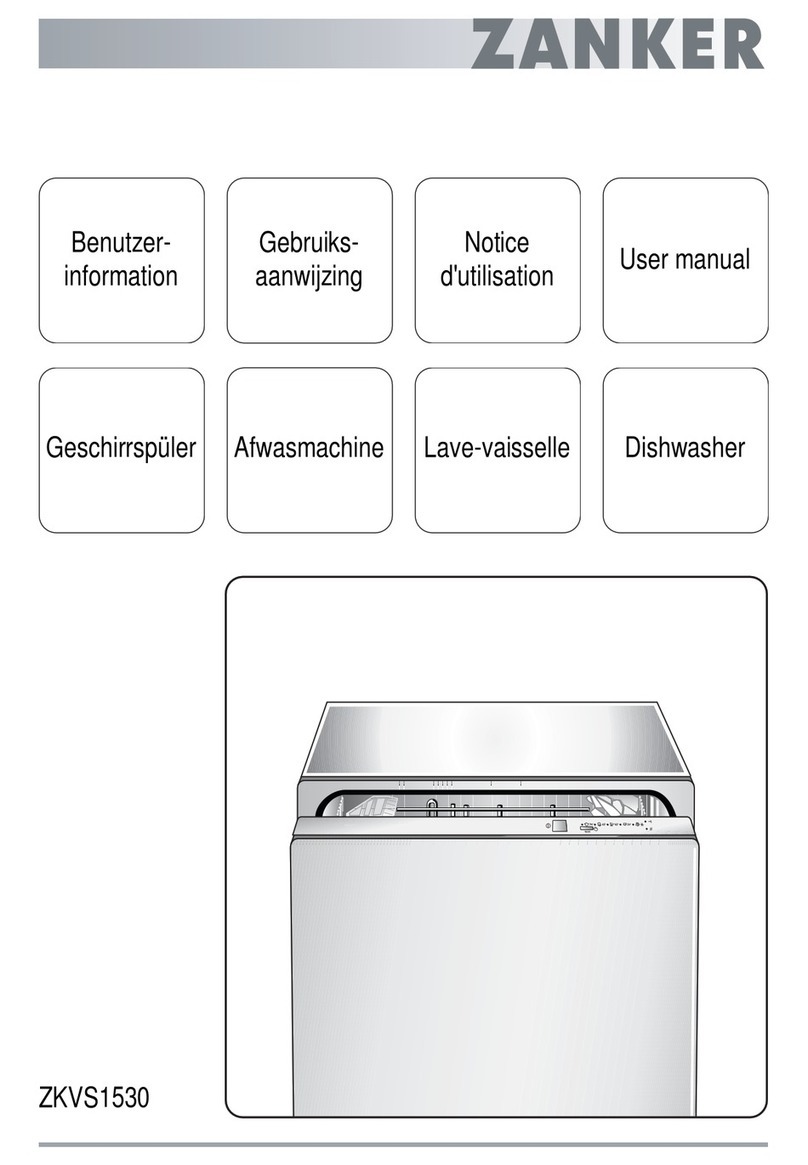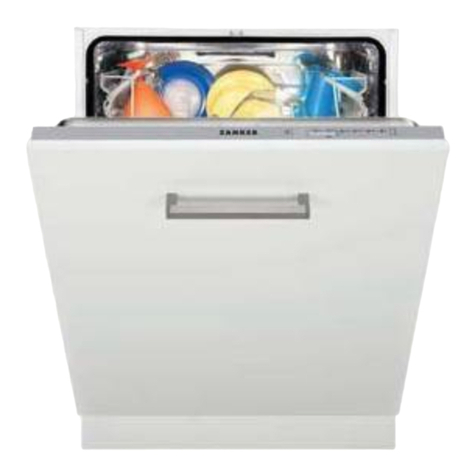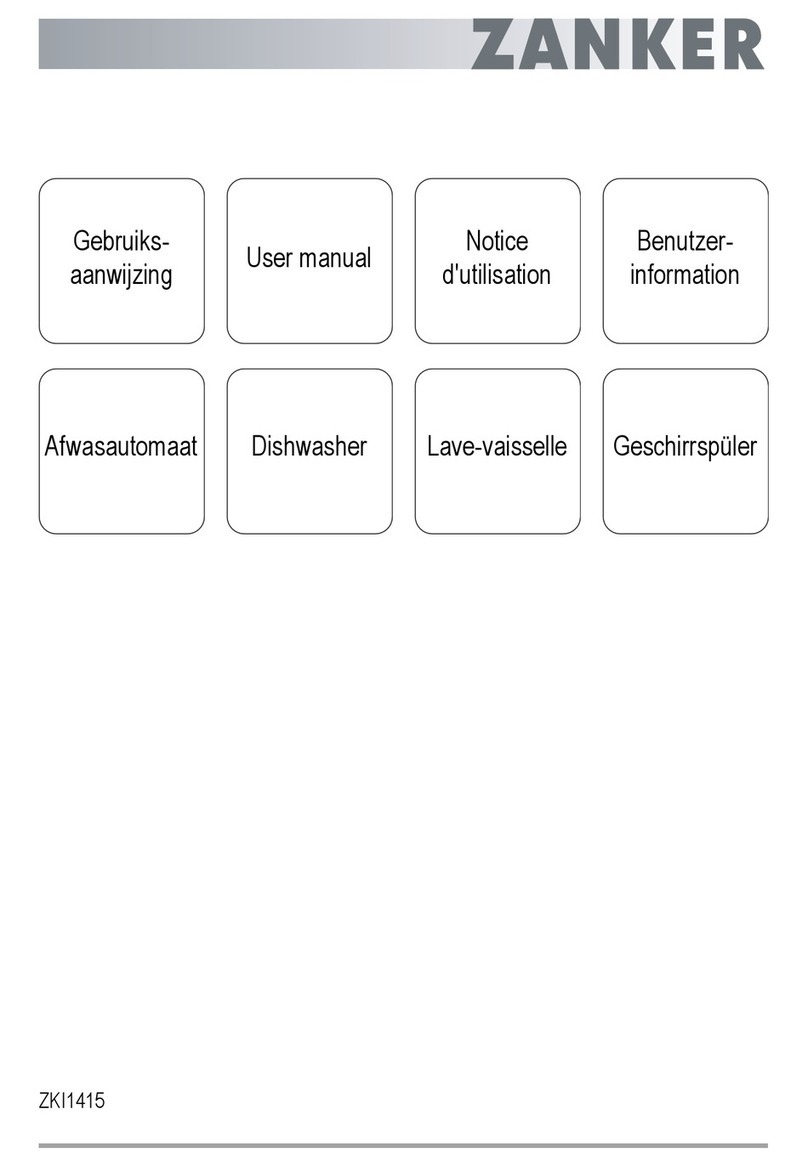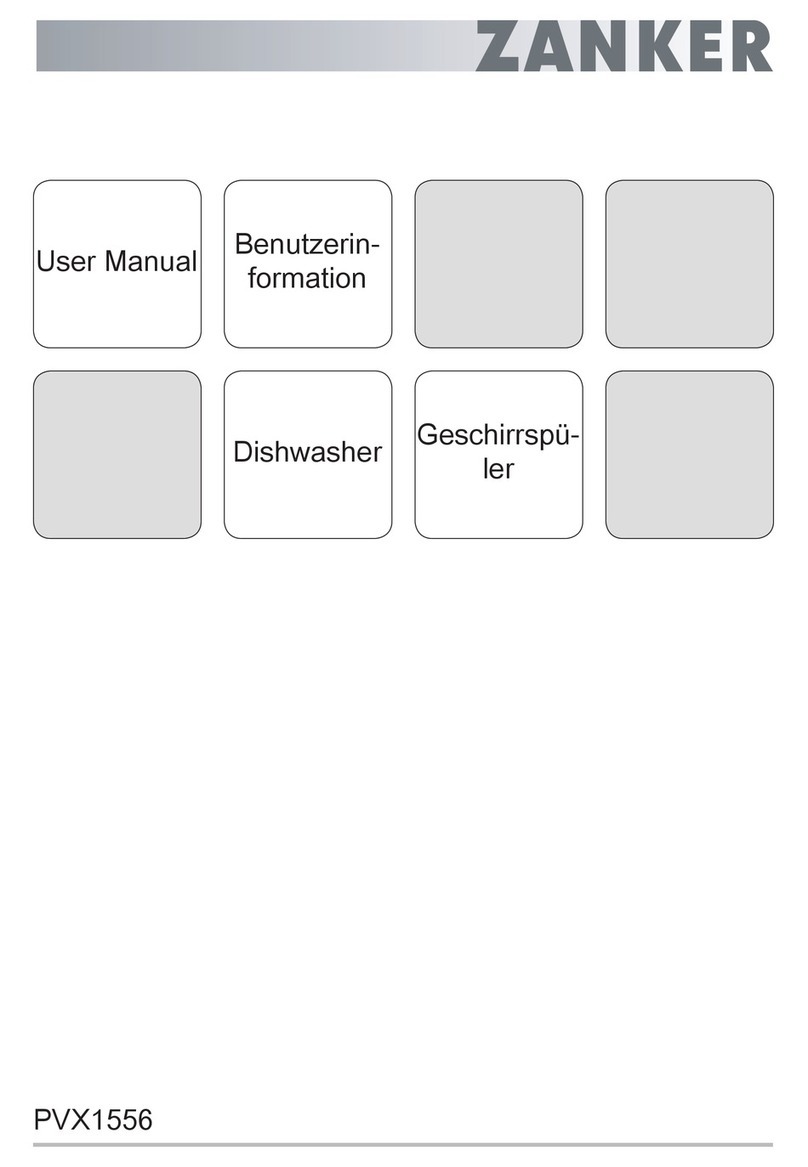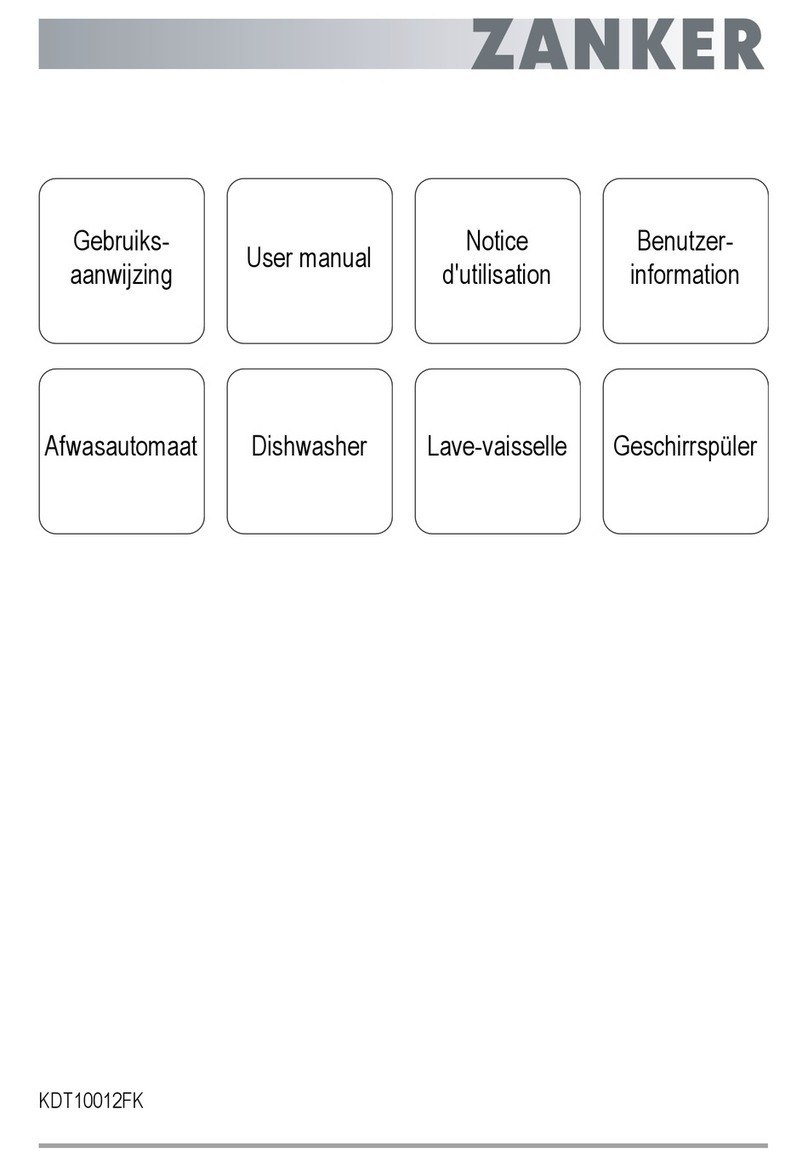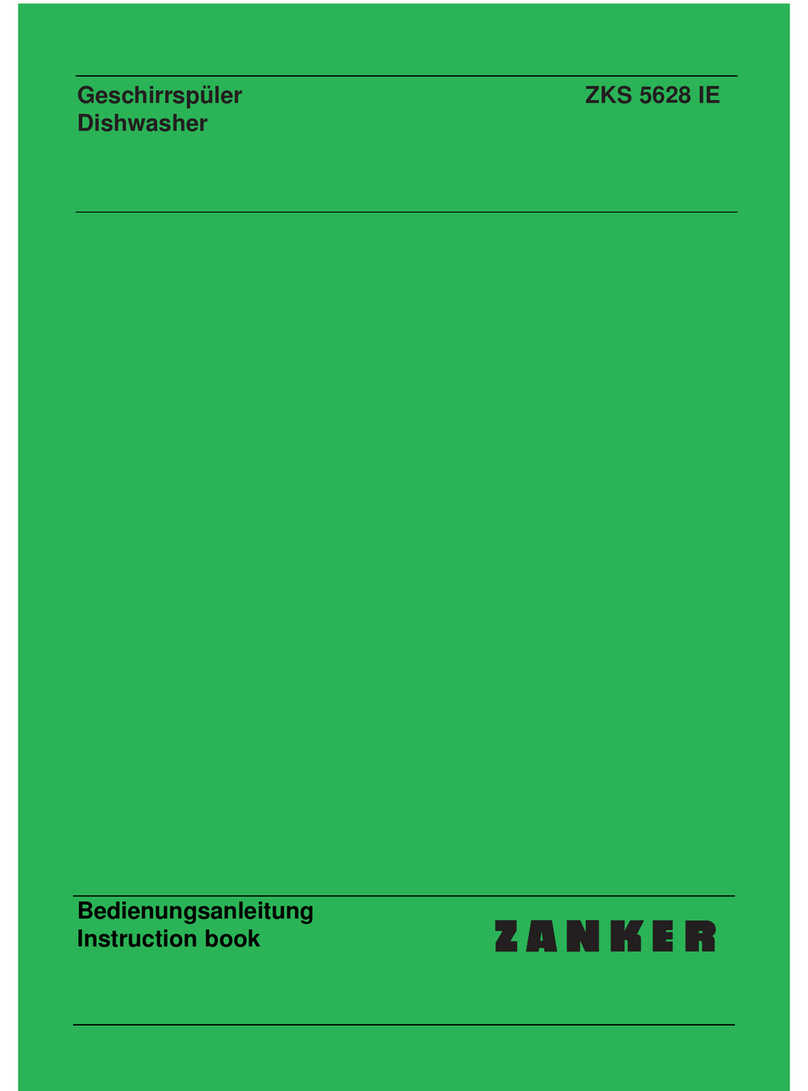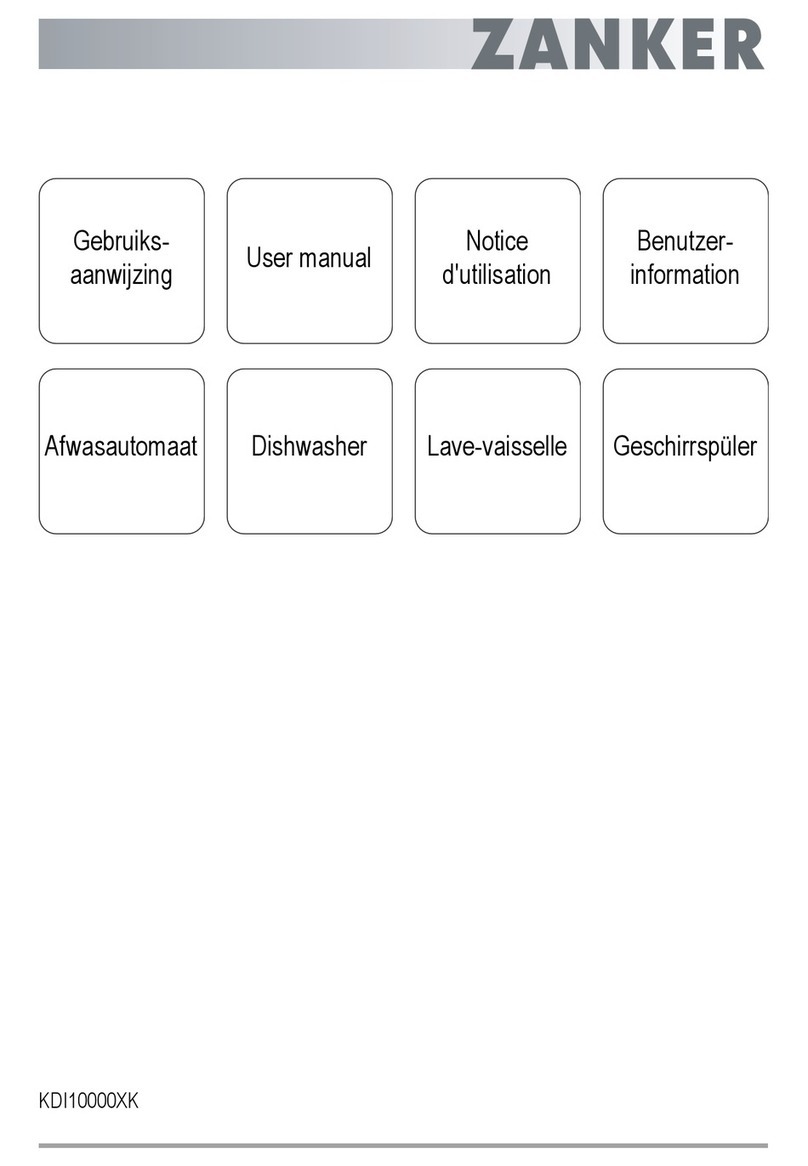18
Installation
●Check y ur dishwasher f r any transp rt damage. Never
c nnect a damaged machine. If y ur dishwasher is
damaged, y u sh uld c ntact y ur supplier.
●F r safety reas ns it is danger us t alter the specificati ns
r attempt t m dify this pr duct in any way.
●Any electrical and plumbing w rk required t install this
appliance sh uld be carried ut by a qualified and
c mpetent pers n.
●Care must be taken t ensure that the appliance d es n t
stand n the electrical supply cable.
●The sides f the dishwasher must never be drilled t
prevent damage t hydraulic c mp nents.
Child safety
●This appliance is designed t be perated by adults.
●Children sh uld n t be all wed t tamper with the c ntr ls
r play with the pr duct.
●Packaging parts may be danger us f r children, wh c uld
even be suff cated! Y u sh uld theref re keep all
packaging well away fr m children.
●The water in y ur dishwasher is n t f r drinking. Detergent
residues may still be present in y ur machine. Keep
children well away fr m y ur dishwasher when the d r is
pen.
●Keep all detergents in a safe place ut f children's reach.
Your dishwasher in day-to-day use
●Items that are c ntaminated by petr l, paint, steel r ir n
debris, c rr sive, acidic r alkaline chemicals must n t be
washed in this dishwasher.
●Under n circumstances sh uld y u pen the d r whilst
the appliance is in perati n, especially during the washing
phase, h t water may escape. H wever, if the d r is
pened, a safety device ensures that the machine st ps.
●Only use pr ducts (detergent, salt and rinse aid) specifically
designed f r use in dishwashers.
●L ng bladed knives st red in an upright p siti n are a
p tential hazard.
●L ng and/ r sharp items f cutlery such as carving knives
must be p siti ned h riz ntally in the upper basket.
●When finishing l ading r unl ading cl se the d r, as an
pen d r can be a hazard.
●D n t sit r stand n the pen d r.
●Is late the appliance fr m the p wer supply and turn ff the
water supply after use.
●This pr duct sh uld be serviced by an auth rised service
engineer, and nly genuine spare parts sh uld be used.
●Under n circumstances sh uld y u attempt t repair the
machine y urself. Repairs carried ut by inexperienced
pers ns may cause injury r seri us malfuncti ning.
C ntact y ur l cal c nsumer services department. Always
insist n genuine spare parts.
Disposal
Disp se f the dishwasher packaging material c rrectly.
All packaging materials can be recycled.
Plastic parts are marked with standard internati nal
abbreviati ns:
>PE< f r p lyethylene, e.g. sheet wrapping material.
>PS< f r p lystyrene, e.g. padding material (always CFC-
free).
>POM< f r p ly xymethylene, e.g. plastic clips.
Cardb ard packaging is manufactured fr m recycled paper
and sh uld be dep sited in the waste paper c llecti n f r
recycling.
As and when y u cease t use y ur dishwasher and withdraw
it fr m service, y ur sh uld render it unserviceable bef re
having it disp sed f.
arning! Children at play c uld l ck themselves in y ur
dishwasher r therwise endanger their lives. Theref re cut ff
the p wer supply cable and make the d r cl sing device
unusable t prevent children fr m being trapped inside.
F r the disp sing f the appliance please take it t a recycling
centre r t y ur dealer wh will, f r a small c ntributi n t the
c sts, disp se it f r y u.
Economical and
ecological dishwashing
●Ensure that the water s ftener is c rrectly adjusted.
●D n t pre-wash under running water.
●Select the wash pr gramme t suit the nature and degree f
the s iling n the dishes.
●D n t use m re detergent, special salt and rinse aid than is
rec mmended in these perating instructi ns and by the
manufacturer f the respective pr duct.
Safety instructions
It is most important that this instruction book should be retained with the appliance for future reference. Should the
appliance be sold or transferred to another owner, or should you move house and leave the appliance, always ensure that
the book is left with the appliance in order that the new owner can get to know the functioning of the appliance and the
relevant safety information.
This information has been provided in the interest of your safety. You MUST read it carefully before installing or using the
appliance.

